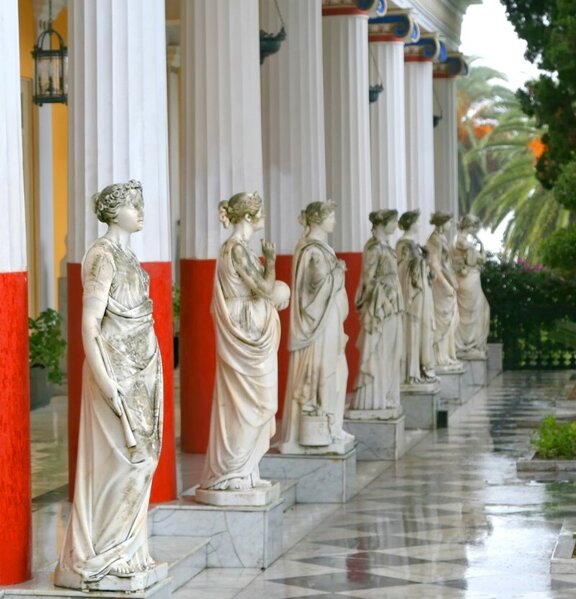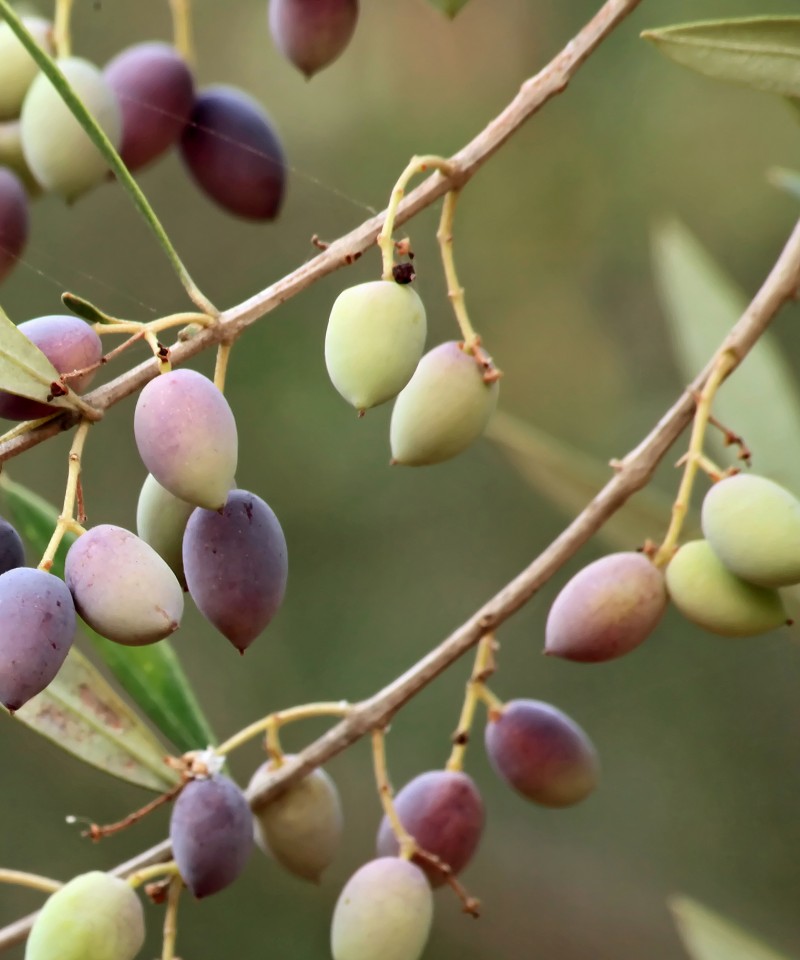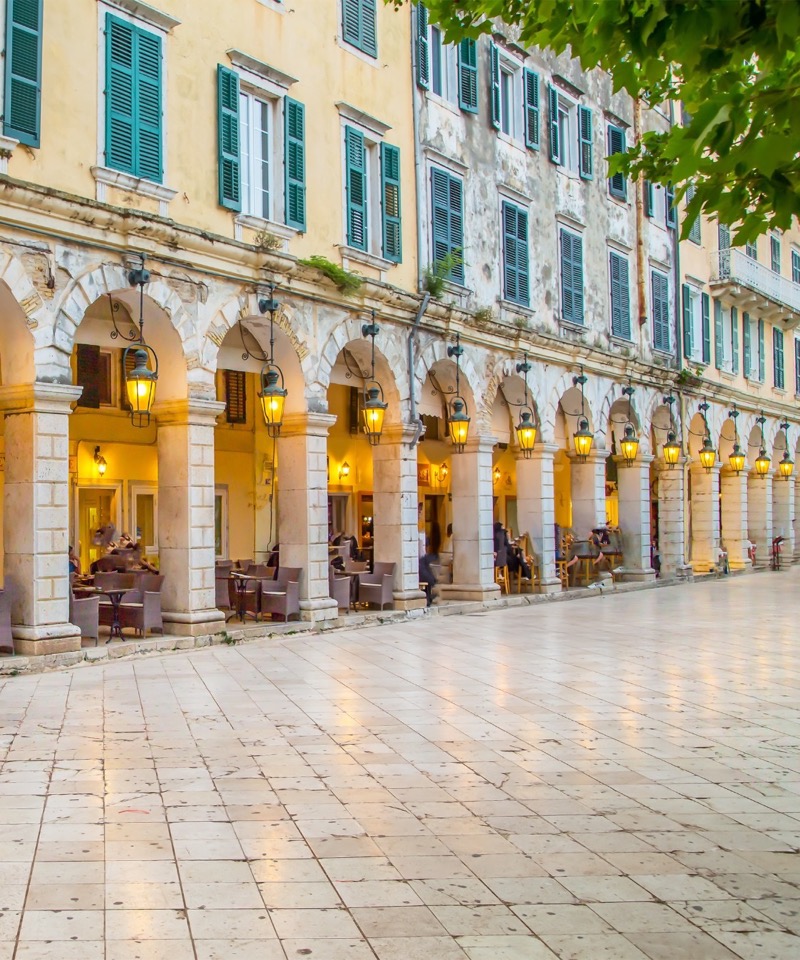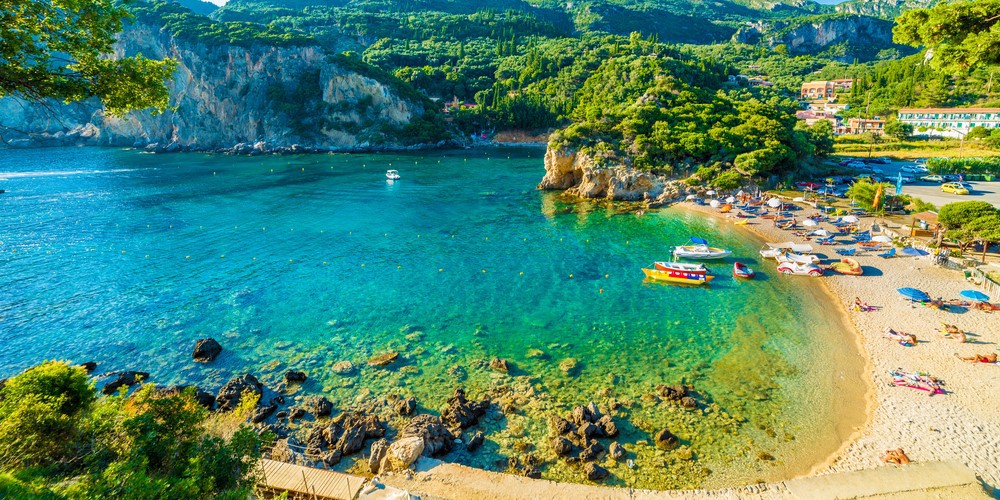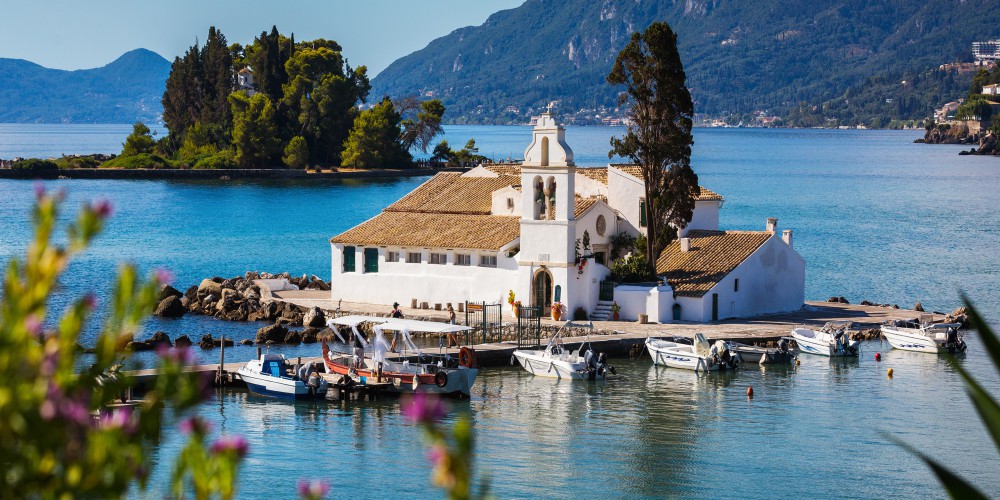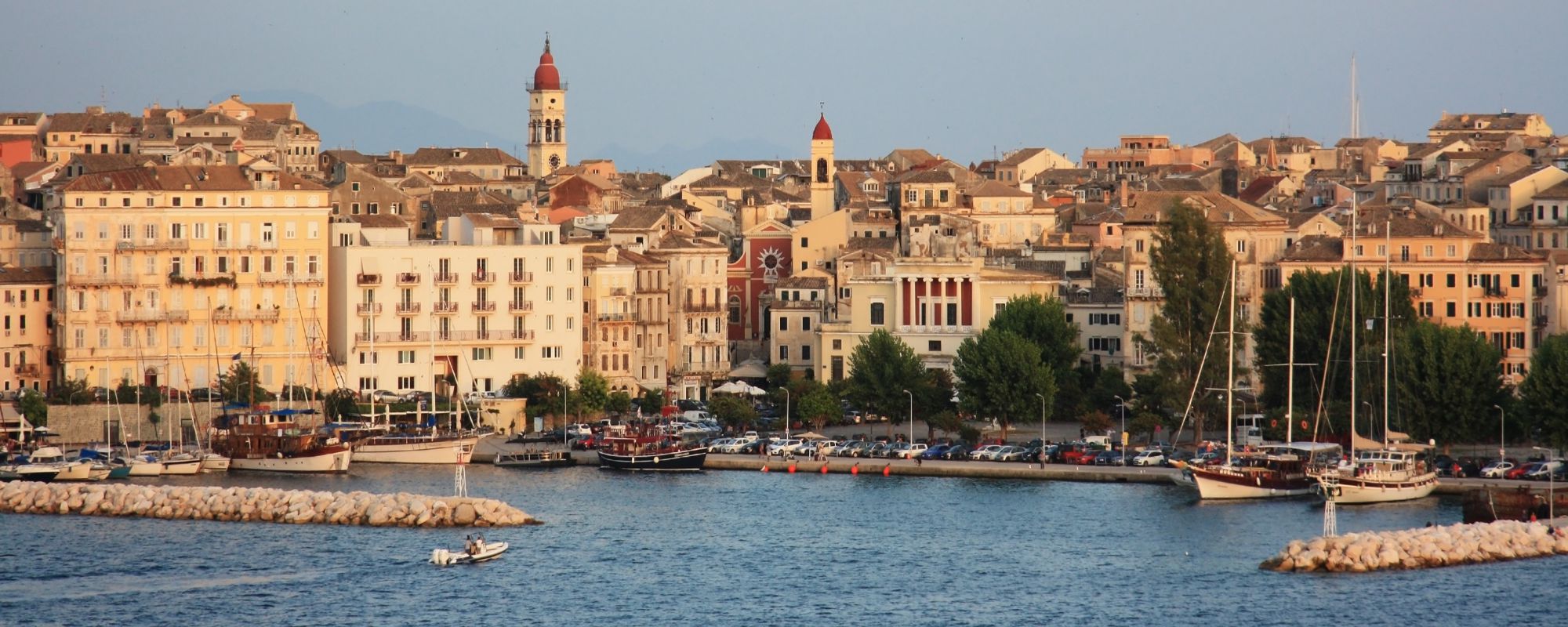
Corfu, the Island of the Phaeacians
Key Takeaways
- Corfu has a rich history and mythology, with legends of Poseidon and the nymph Korkyra. It played a significant role in ancient Greece, as mentioned by Homer, and was influenced by Byzantine and Venetian rule.
- Corfu has a typical Mediterranean climate with warm and dry summers and mild, wet winters. The island is of medium size, with a total area of 593 km2 and a stunning coastline of 217 kilometers. It offers diverse landscapes, including mountains and beautiful beaches.
- Corfu has a range of accommodation options, including apartments, mid-range hotels, and luxury five-star hotels. Some recommended options include Grecotel Corfu Imperial, Grecotel Eva Palace, Kontokali Bay Resort & Spa, and Grand Mediterraneo.
- There are several must-visit sights on the island, including Pontikonisi (mouse island), Mon Repo palace, the Church of Agios Spyridon, and notable regions like Kassiopi, Mount Pantokrator, Angelokastro, Paleokastritsa, and Corfu town.
- The old town of Corfu is a UNESCO World Heritage Site known for its Venetian and neoclassical architecture.

Located at the northwesternmost point of Greece, the island of Corfu -Kerkyra in Greek- is the second-largest island of the Heptanese islands and for sure a hub of Greek civilization with a significant role in the country's history since antiquity.
The History and Mythology of Corfu Island
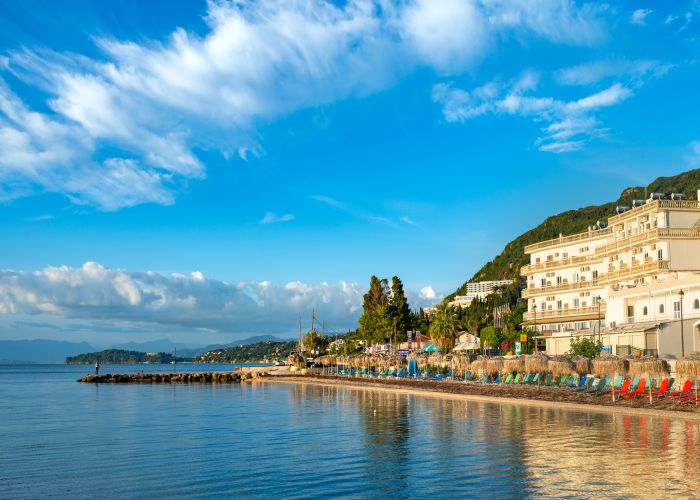
According to ancient Greek mythology, Poseidon, the mighty god of the seas, fell madly in love with the beautiful nymph Korkyra, the daughter of Asopos and Metope.
He decided to take Korkyra to an uninhabited island, and out of marital bliss, he offered the island to the nymph.
From thereafter, the island was known to everyone as Korkyra or Kerkyra. From the union of Poseidon and Korkyra, a child named Phaeax was born. He came to be the king of the island, which was also known as the island of the Phaeacians, the descendants of Phaeax.
The importance of Kerkyra in the ancient world is reflected on many occasions. Homer mentioned the island as being the last stop of Odysseus in his journey to reach back to Ithaca, and historically the island was at the center of events relating to the Peloponnesian War.
In Byzantine times, the island was named Coryfo out of the peaks of the mountains the sailors used to see approaching its port. Later on, the name that prevailed was Corfu.
The location of Corfu played an important role in the development of the island's culture. Especially during the middle ages, the island was perceived as the border between the 'despotic' oriental eastern power of the Ottoman Empire and the Italian-dominated West.
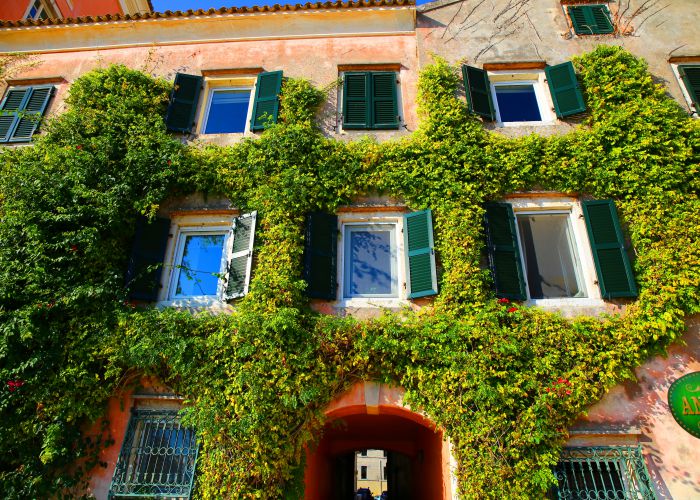
Therefore, the one that shaped the character of the island was the city of Venice which held for a long time a strong foothold on its territory.
Due to the presence of Venetians and, afterward, other western European countries such as England and France, the island experienced the effects of Renaissance, Classicism, and Enlightenment to the extent that the rest of Greece could not.
Therefore, architecture, arts, and culture came to be much different compared to other regions of the country that continued to be under the occupation of the Ottomans.
Many figures originating from Corfu shaped the identity of Greece in its early years after the Greek War of Independence. Perhaps the most influential one was Count Ioannis Kapodistrias, who served as the first Governor of the newborn modern Greek State.
Before taking the office of the Governor, he made a career as a diplomat in many European countries, such as Switzerland and Russia, where he served as minister of Foreign Affairs.
Other important figures are the composer Nikolaos Mantzaros, the poet Andreas Kalvos, the novelist Albert Cohen, the politician Georgios Theotokis, Prince Philip - the Duke of Edinburgh, Princess Alexia of Denmark and Greece, and many, many more.
The Climate and weather of Corfu, the star of the Ionian islands

Corfu has the typical weather of the Greek islands. It is warm and dry in the summer, with a mild yet wet winter. Snowfall is rare in Corfu, but if it does snow, the only region where it can gather is at Pantokranator.
January is the coldest and wettest month on the Ionian islands, while late June to mid-August is when the island sports the highest temperatures.
Average low levels for January are at around 4-5 °C (4° F), while the average high is at 15°C (58° F). Low average temperatures during July are 20°C (60° F), and high temperatures are around 35°C.
How big is Corfu in miles?

Corfu is the seventh-largest island in Greece. So, it is a medium-sized island that has 593 km2 and is about 466500 acres.
The stunning coast of Corfu, Greece, is 217 kilometers (137 miles) in total. The major part of a national road from Paleokastritsa to Corfu Town and down to Lefkimi is well maintained with a total length of 100 km to 100 km.
Where can I stay in Corfu?
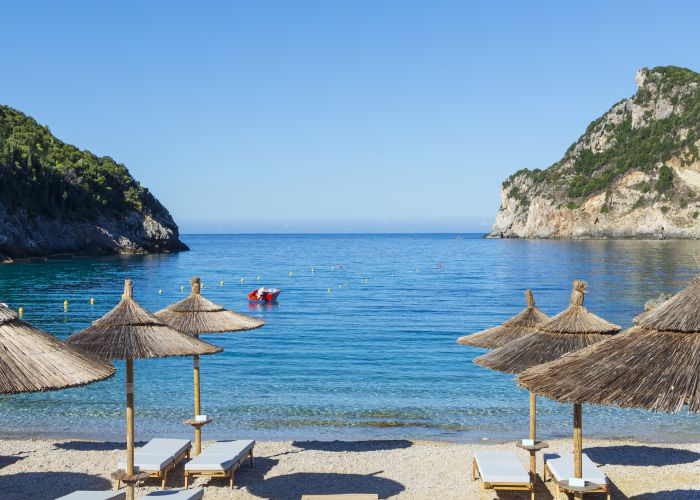
The island has a variety of beautiful resorts for all ages, tastes, and budgets. There are apartments, mid-range hotels, and, of course, excellent five-star hotels.
Of the most popular 5-star hotels, our top choice is perhaps the Grecotel Corfu Imperial. The hotel is located on a small peninsula – Thanks to this convenient location, almost all of the hotel's rooms and bungalows have sea views. It is also immersed in luscious greenery.
Grecotel Eva Palace is also in no way inferior. This hotel is positioned perfectly for a romantic getaway: families with small children are accepted here only in the high-season months. During all other months, it turns into a couples-only hotel.
From the 5-star category, we would recommend Kontokali Bay Resort & Spa and Grand Mediterraneo.
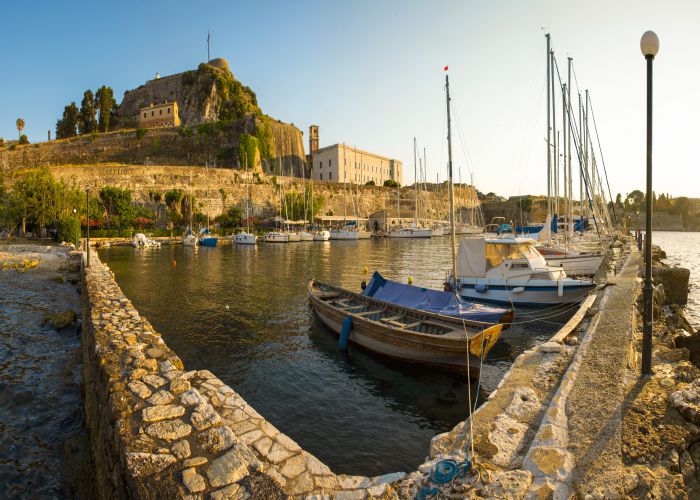
Among the four-star hotels, the hotels of the Aquis chain enjoy an excellent reputation. Hotel Aquis Sandy seaside resort is located in a wonderful place - Agios Georgios.
From the outside, it is absolutely simple, but it is located on one of the most beautiful beaches in the Mediterranean Sea. Here there are completely unusually colored waters, as, at the bottom, there is a white slab with waves of washed sand.
The shallow waters and surprisingly warm temperatures make the sea entrance easy. This makes it also suitable for holidays with children. In addition, it offers all food options- from breakfast to all-inclusive packages.
One of the most popular three-star hotels on the island is Messonghi Beach. It is the largest in Corfu. This hotel is good for families with children and occupies a huge area.
It has a beautiful sandy beach and nice rooms. It boasts 'all-inclusive' packages, while it has affordable prices, especially during the off-season months.
How to reach Corfu
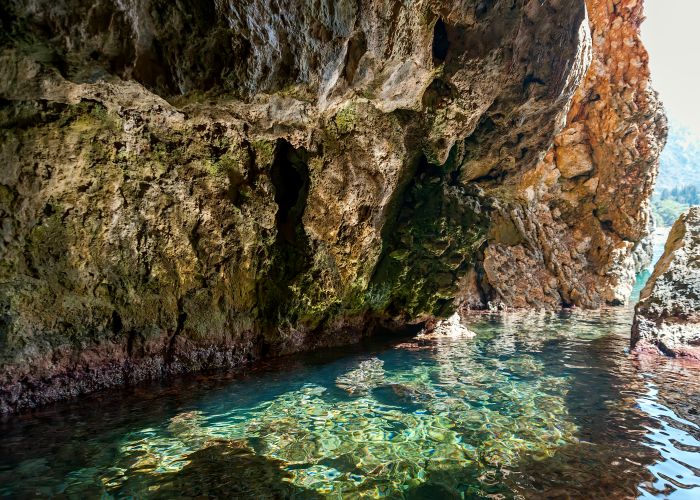
In recent years, Corfu has become one of the tourists' favorite destinations in Greece, especially in the summertime and at Easter, an annual tradition that is gaining national attention.
The island boasts an international airport, Corfu airport; you can fly from Athens, other parts of Greece, and even some European capitals.
Since the Egnatia Highway was built, the island has been easy to access from northern Greece and the surrounding regions. From the port of Igoumenitsa on the Greek mainland, it offers frequent, modern transportation service via ferry.
The ferry to Igoumenitsa can be taken from Lefkimi's south harbor. Further ferry services to Corfu are available in Patra and take 6 to 7 hours.
The must-visit sights of Corfu
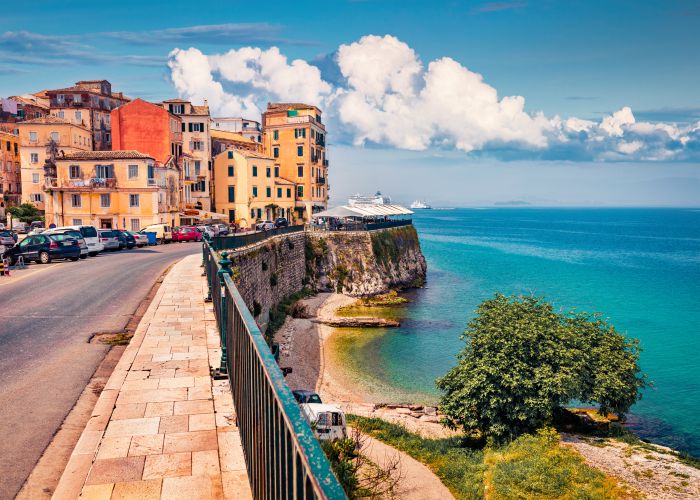
Pontikonisi (mouse island)
Opposite Corfu airport lies the famous Pontiokonisi, a green and tree-covered rock at the entrance to the Halikiopoulos lagoon.
In fact, it is the first thing the visitor sees from above as he arrives at the island. Pontikonissi (or the 'mouse island' as it is translated from Greek) is verdant, with tall cypresses and other rare plants. As a result, it is considered a natural monument.
To enjoy this unique landscape, go to Kanoni, where the view is panoramic, and there are cafes and restaurants.
Mon Repo
An imposing neoclassical palace, which was built as the summer residence of the English Commissioner Frederic Adam for the sake of his Corfu wife, Nina Palatianou.
After the union of the Ionian Islands with Greece, it was granted to King George I, while from 1995, it passed into the hands of the Greek state and is now open to the public.
In fact, the Prince of Edinburgh, Philip, who was Queen Elizabeth's husband, was born in this particular palace.
The Church of Agios Spyridon
The patron saint of Corfu island is Agios Spyridon, and the church where it is located and its shrine was built in 1859.
The church is in the Old Town. It looks modest from the outside, but the interior is impressive with rich decoration and an iconostasis of 1864 made of Paros marble.
Inside the church is the shrine of Saint Spyridon, which the faithful worship, while twice a day, visitors can see his incorruptible Holy relic.
The most beautiful regions of Corfu island
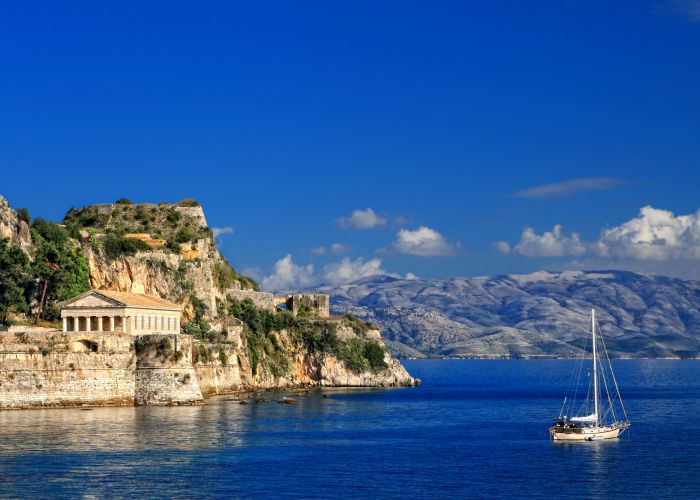
Kassiopi
The traditional fishing village of Kassiopi has maintained its traditional character even as it is popular in the southeast of the island.
It has an impressive harbor lined with wooden fishing boats and offers a range of restaurants and cafes serving seafood popular with wealthy British and Italians who also own their homes here.
Calm and unhurried, it is most known for its secluded coves with white pebble beaches and stunning turquoise waters. You can enjoy breathtaking panoramas by hiking into the destroyed Byzantine castle at the foothills behind the village.
Mount Pantokrator
Mount Pantokrator rises 916.6 meters at the northernmost point of Corfu. A road leads to the top, so you can drive to the highest point, although some people prefer hiking out of town Perithia, which is usually around two hours of hiking.
Pantokrator's Monastery, at its top, dates to the 13th century, although it was originally built during the 17th and 18th centuries.
The views from the summit are spectacular, with views of Albania in the east, the Diapontia islands in the north, and the Greek islands of Paxos and Antipaxos in the west.
When it is a clear morning, you can even see up to south-eastern Italy, around 130km from you.
Angelokastro
Angelokastro is a Byzantine 13th-century castle positioned at an angled cliff. The structure was built along the northwest coastline of Palainokastratitsa on rugged and difficult terrain for protection.
In addition to Kassiopi and Gardiki palace, the ancient city served as a defense triangle that gave occupants views in any direction.
The castle served the country in three Ottoman battles. Today there are only the remains of the original buildings.
Paleokastritsa
Paleokastritsa is situated 25 km north west of Corfu town and along sand-filled indented coastal areas.
There are six deep and curving bay areas that shelter enchanting beaches of sandy and pebble and extend over a length of 450 km.
Paleokastritsa is a popular destination for tourists, and it gets quite busy during peak season. A monastery from the 12th century is set on a hill over the coast with gardens, a church, and a small museum.
Corfu town
The charming Corfu town is a warren of lined streets and elegant Venetian houses, many of them today hosting informal seafood taverns and souvenir shops.
The UNESCO-listed Corfu Old Town is guarded by two imposing 15th-century forts and includes many church buildings, including the Church of St. Syryridon.
This waterfront is a port and has regular ferry services to Igoumenitsa and daily excursions from the port.
What to see in Corfu Town
The Corfu old town
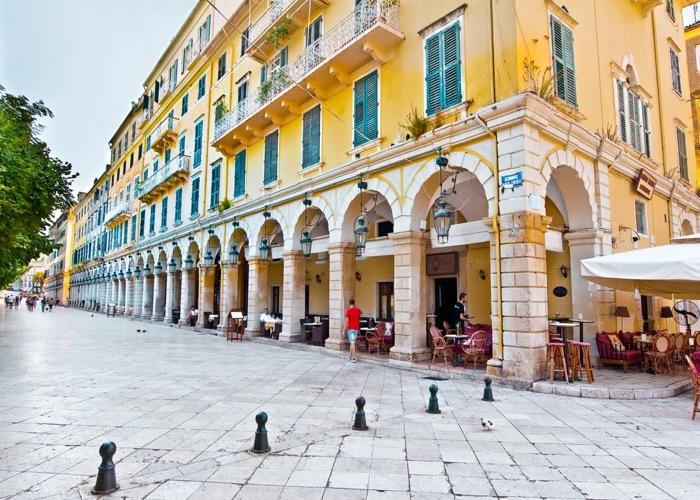
The medieval Corfu town is a UNESCO World Heritage Site that promises the traveler an experience to remember.
The architecture is directly influenced by Venetian rule, resulting in an Italian-flavored town with beautiful alleys and long-arched colonnades that will transport you back in time.
Neoclassical architecture is not absent, with fine examples of mansions and palaces inside the old city center.
Do not miss the chance to visit the Palace of St. Michael and St. George, commissioned by the British Lord High Commissioner, Sir Thomas Maitland, as his residence.
Stroll around the palace premises and do not forget to pay a small visit to the Gardens of the People in close vicinity to the Palace. Today, the Palace operates as the Museum of Asian Art, put up together after the donation of artifacts from many notable Greeks.
Continuing your walk in the city, you have to check the 17th-century Renaissance-style Town Hall of Corfu, formerly known as the Noble Theater of San Giacomo, the first opera house in Greece.
Other buildings that you shouldn’t miss are the Catholic Church of Duomo, the Cathedral of Corfu, the Ionian Academy with its radiant history, the Palace of Mon Repos, the Ionian Parliament, and the peristyle monument of Maitland known as “Sterna” at the center of Spianada Square.
The Achilleion palace

Some 20 minutes away from the city of Corfu is the Achilleion, a palace located in the village of Gastouri.
Originally, the area belonged to the Corfiot philosopher and diplomat Petros Vrailas Armenis. In 1888, the Empress of Austria, Elizabeth, more commonly known as Princess Sissy, visited the former Villa Vraila and decided to build a palace there to escape the oppressing royal court of Vienna. She actually wrote:
“...I want a palace with pillared colonnades and hanging gardens, protected from prying glances — a palace worthy of Achilles, who despised all mortals and did not fear even the gods.”
An army of artists and engineers was employed for different projects, but the most iconic one is the statue of the dying Achilles, the epicenter piece of the Gardens.
Another impressive piece of art is Franz von Matsch, the Triumph of Achilles decorating the monumental staircase of the palace.
After Elizabeth's death, the property was sold to the German Emperor and King of Prussia, Kaiser Wilhelm II, who often visited the palace and made it an important European diplomatic hub.
In WWII, the Palace was requisitioned by the Nazi forces, and the Wehrmacht demolished the stone bridge that connected the palace to the beach of Benitses.
Today, the palace is a museum under the management of the Hellenic Tourism Organisation.
The old Fortress of Corfu
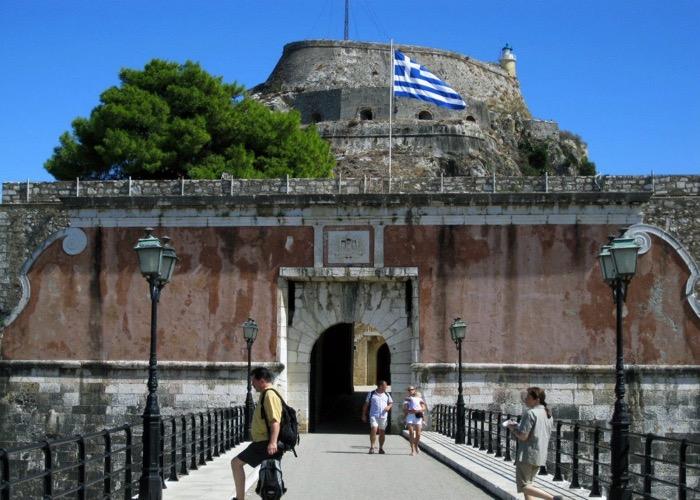
At the very heart of Corfu's old town, the Old Fortress stands as a guardian of Corfu itself.
In 1386, the people of Corfu, under the threat of the Ottoman invasion and the disappointment from the Byzantine forces, asked for the intervention of Venice, surrendering themselves to the Doge of Venice.
This was the beginning of Venetian rule that lasted for about four centuries and shaped the Greek culture and history of the island.
The Venetians quickly decided to exploit as much they could the old Byzantine fortifications and further expand the fortress for the security and control of the island and its waterways.
In the 15th century, the fortress was already built and helped the defense of Corfu island from the continuous tries of the Ottomans to invade it.
It successfully repelled most foreign attacks. It used to be the most elaborate defensive system of the island up until the construction of the New Fortress during the 19th century.
During WWII, the Nazi forces that occupied the island imprisoned the thriving population of Jews that lived for centuries in harmony with the locals and transferred them to the concentration camps of Auschwitz-Birkenau. Just over 100 people managed to survive and return to Corfu.
Today, the old fortress is an open site with all its facilities restored and hosts the Municipal Library of the island as well as the priceless State Archives of Corfu island.
Do not miss the chance to visit the church of St. George, a Christian temple that follows ancient Greek architecture!
The most beautiful beaches in Corfu overlooking the Ionian sea
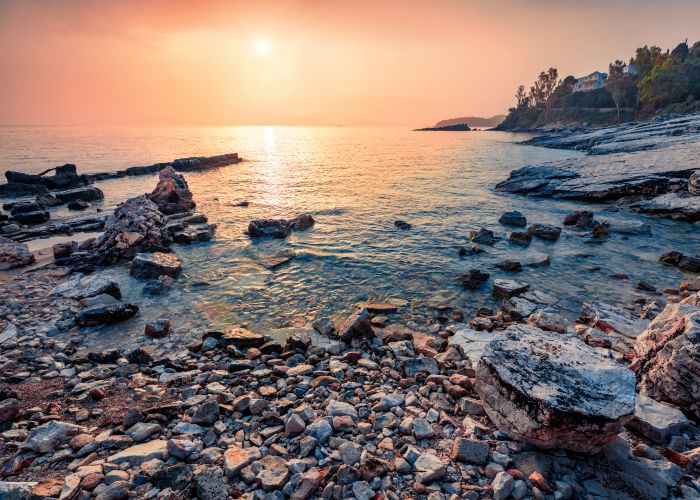
Glyfada
Considered the very finest beach on the Ionian islands, Glyfada beach is situated on Corfu's west coast, 27 km west of Corfu town and 2 km south of town Pelekas.
It is a blissfully wide stretch of golden sand lined by sunbeds and umbrellas, surrounded by mountains covered in pine trees and olive trees.
Some big hotels and apartments can be found within the area. Tourists can find tavernas, cafes, and fun activities, including jet skiing, paddleboat rides, banana boats, and other water sports.
The west coast view of the Ionian sea offers beautiful sunset views and gets quite crowded at times during the summer, especially during the high-season months.
Canal d'Amour
On Corfu’s north east coast, approximately 20 miles from the equally fascinating little seaside village of Sidari, Canal d'Amour -or the canal of love-is among Corfu's most spectacular natural treasures.
It consists of impressive rock formations, allowing natural passage through the small sandy beaches to the sparkling blue water.
You can jump out of the rocks into the warm, salty sea, swim through tunnels or caves and have amazing underwater adventures - snorkeling equipment is available at the beach, along with sunbeds and umbrellas.
La Grotta Beach
La Grotta beach in Paleokastritsa lies along Corfu's west coast, and it's a beautiful beach for tourists and locals.
The seaside is rocky, but the clear blue water hides a vast and fascinating underwater world filled with colorful fish.
The beach boasts a cliff from which you can jump into the Ionian sea. In summer, the beach gets busy, but due to its rocky element, it never gets overwhelmingly crowded.
The gastronomy of Corfu
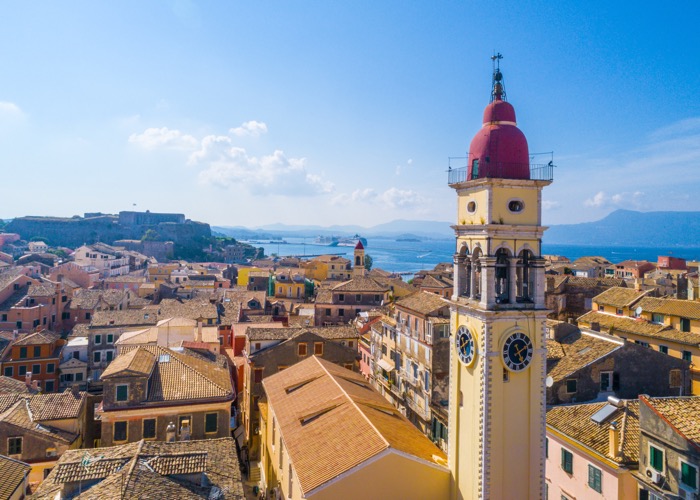
Corfu is famous for its gastronomy, and you will enjoy traditional dishes in all the tavernas and restaurants on the island.
Among the most well-known dishes are pastitsada, formerly made with cockerel but now with beef, sofrito, made with beef and dominated by the flavor of garlic), and burdeto, made with cod.
Kumquat flourishes in this particular place, and you can enjoy it in many variations: in a jam, spoon sweet, in meat dishes, and of course, as a liqueur after lunch or dinner.
Final Thoughts
The aetherial island of Corfu is a Greek holiday destination no one will be disappointed from. Whether you're looking for a chill-out vacation full of amazing beaches, rich history, unique cultural stimuli, or admirable architecture in Corfu town, Corfu will give you what you want!
Consider this your sign to book your trip to Corfu, Greece!





